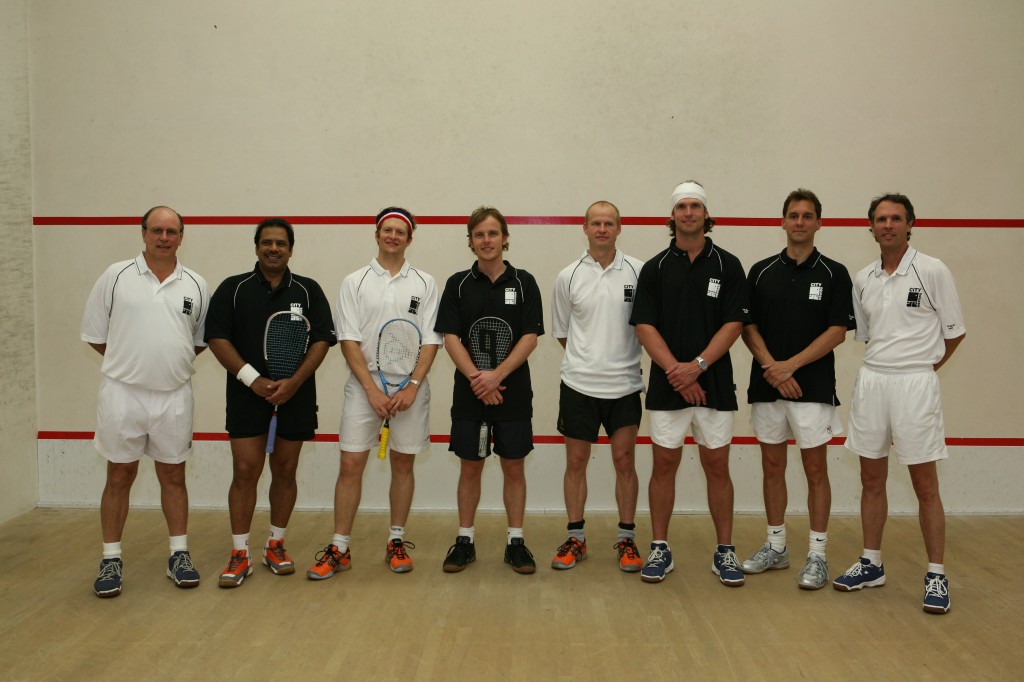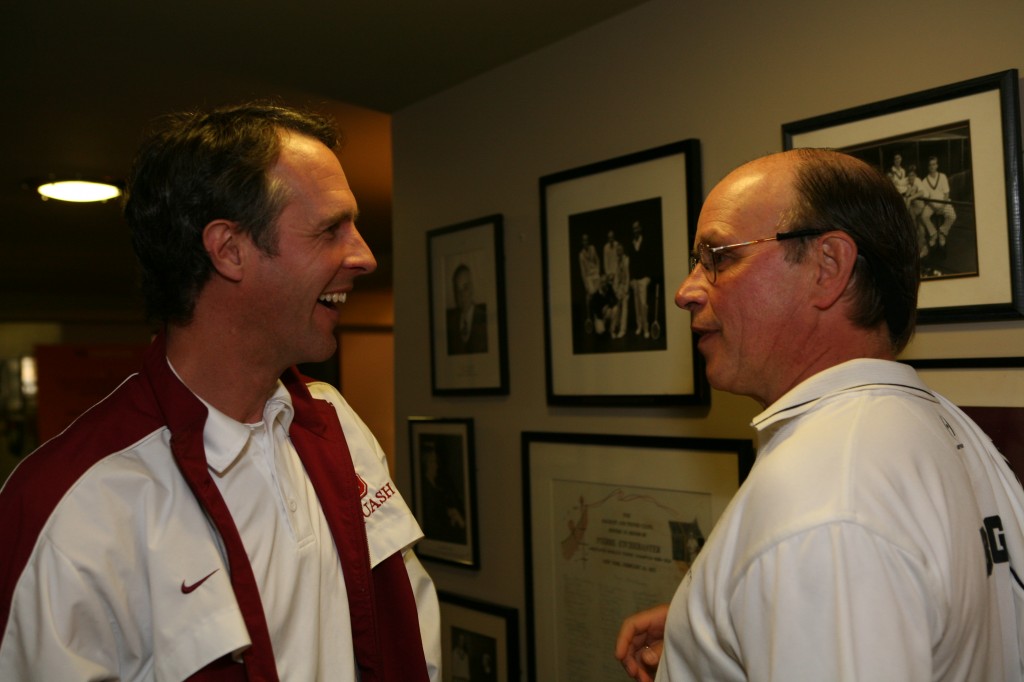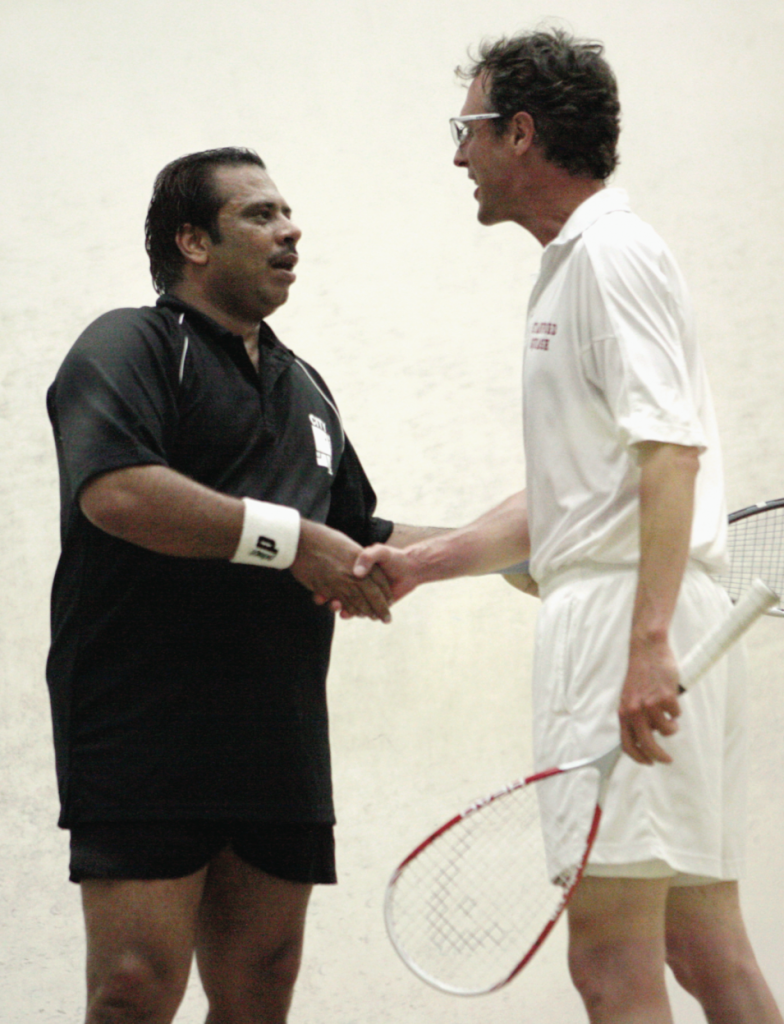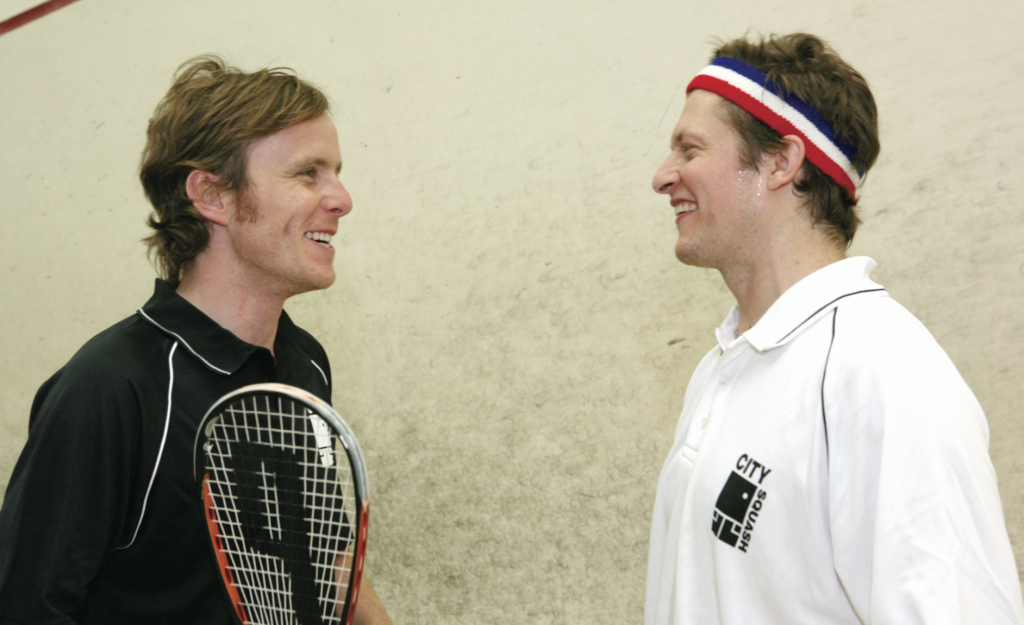
By James Zug

It was a jam session. It was like the Bird and Diz and Train getting together in some East Village loft at three in the morning to play jazz and talk about old times. Only here it was not a loft but the spectacularly endowed Racquet & Tennis Club and instead of a sax and a trumpet we had racquets and JP and Jake and Mork and Mudgie and Mo.
Never has such an incredible amount of talent and accomplishment appeared on court together in the history of the game. Never have you seen so many British Open titles (13) or world number one rankings (3) or North American number one rankings in singles (2) and doubles (4) or U.S. national doubles titles (14) all in one place, on court, hitting balls, competing. Never do you get to see Nicol v. Power; never do you see Briggsy out there ripping reverses; above all, never do you get to see Jahangir and Talbott, together again, a one-night-only reunion of America’s greatest match. All eight players were current or future U.S. Squash Hall of Famers and top five greatest ever. Every players’ bio began with something like “the greatest player of all-time” or “the best player of his era.” You’ll never get this night again.


This was the fourth CitySquash Bash and I really don’t know where Tim Wyant and Sanford Schwartz go from here: A squash match in a hot air balloon? A glass court on the White House lawn?
The scale was sheer absurdity: 758 people and $350,000 raised. Both in a single evening at one place. It was the biggest party—on both numbers—in the history of American squash.
The party lasted at the R&T for seven hours, but it was a time-bender and when it was over it felt like a week had passed. There were cocktails and auctions and speeches and the best words coming through all the microphones were from the CitySquash kids themselves who gave, in their pre-match speeches, the exact reason why all of this was happening: turning hope into fact.
In the doubles exhbitions, Peter Briggs rekindled the magic of two, three decades ago; Gary Waite reunioned with his old partner Mark Talbott; and Jonathon Power showed why everyone on the pro doubles tour is glad he’s got Parker Power’s diapers to change—he’s that good.
More historic magic hovered around the singles exhibitions. Mark Talbott and Gary Waite reprised the early nineties by playing a half hour of hardball, the ball hissing off the strings. Power and Peter Nicol played the most hard-fought exhibition of softball anyone had seen (Nicol sneaking it out).
And then the thing that will make the 900 people who were there for the Drama in the ‘Rama cry: Jahangir Khan and Mark Talbott, on court, playing both hardball (Talbott won easily) and softball (Khan won, barely).

It was more than 22 years since they played their famous match in the finals of the 1984 Boston Open, when Talbott beat Khan 18-16 in the fifth. Khan, when telling the gallery his rememberances of that night, said he had lost 17-16 in the fifth—even crueller, his faculty memory has falsely left him for two decades gnawing on the bone of at least one one squandered match point.
Khan, president of the World Squash Federation, flew in from Karachi; Talbott, coaching at Stanford, from Palo Alto. They had not seen each other in more than two decades. They might not ever again. But for one brief moment, with Khan slashing at short balls and Talbott hopping towards the T, there they were, jamming, making sweet, sweet music.






